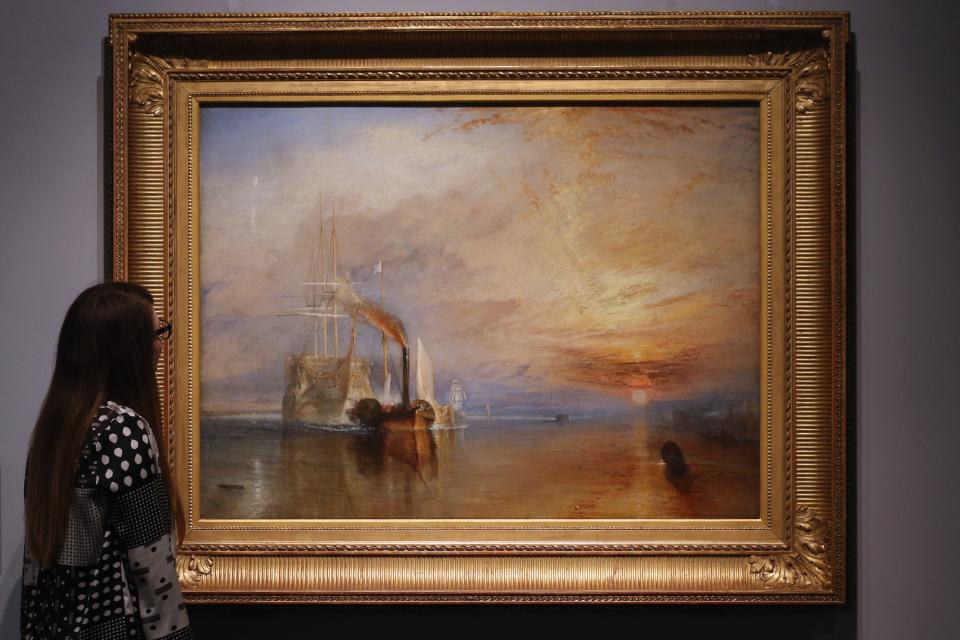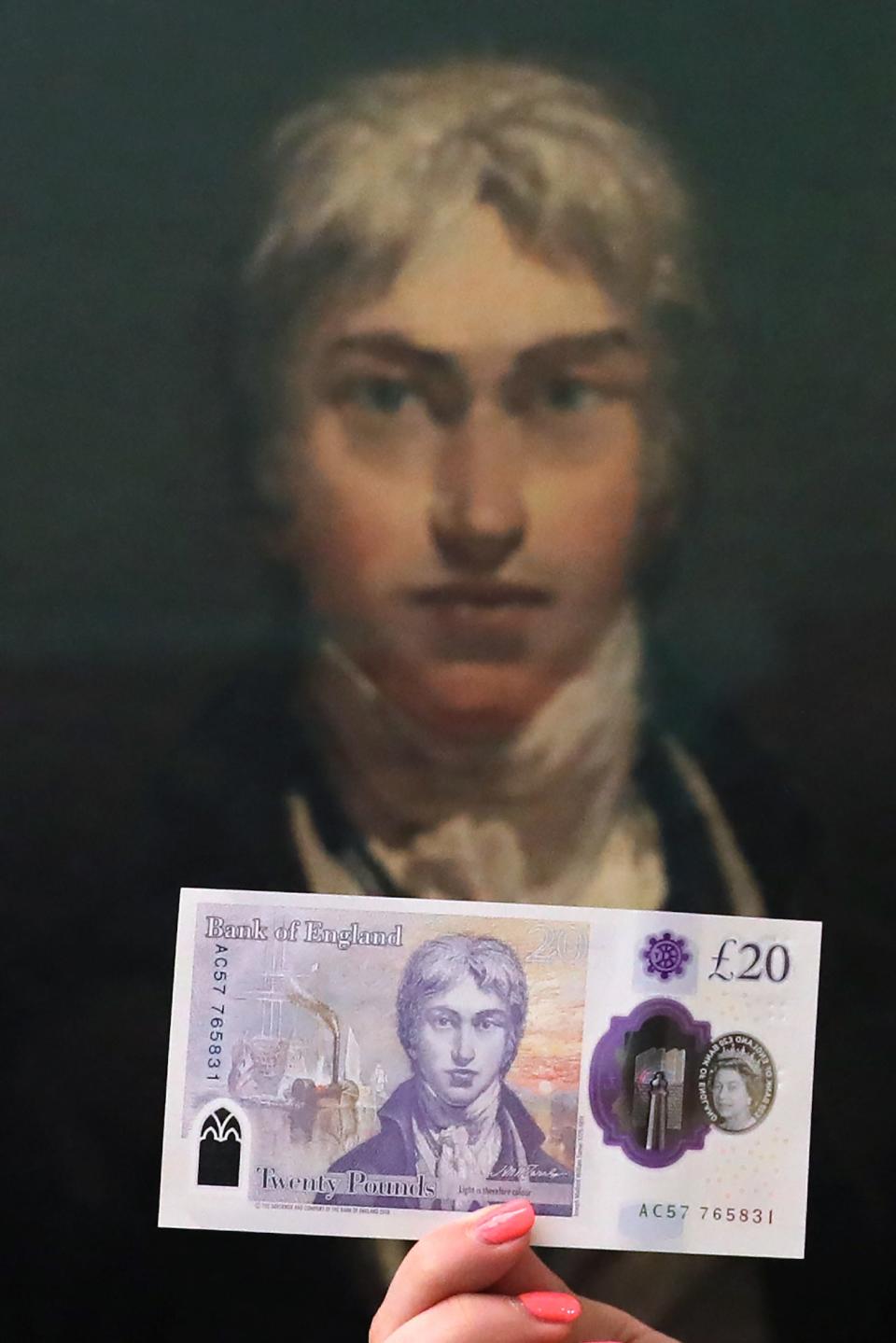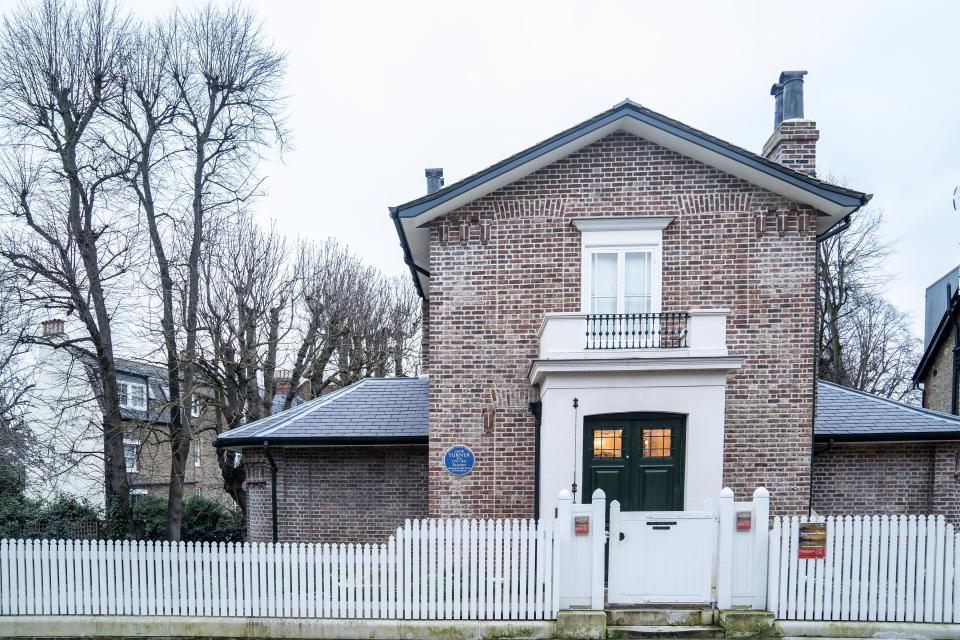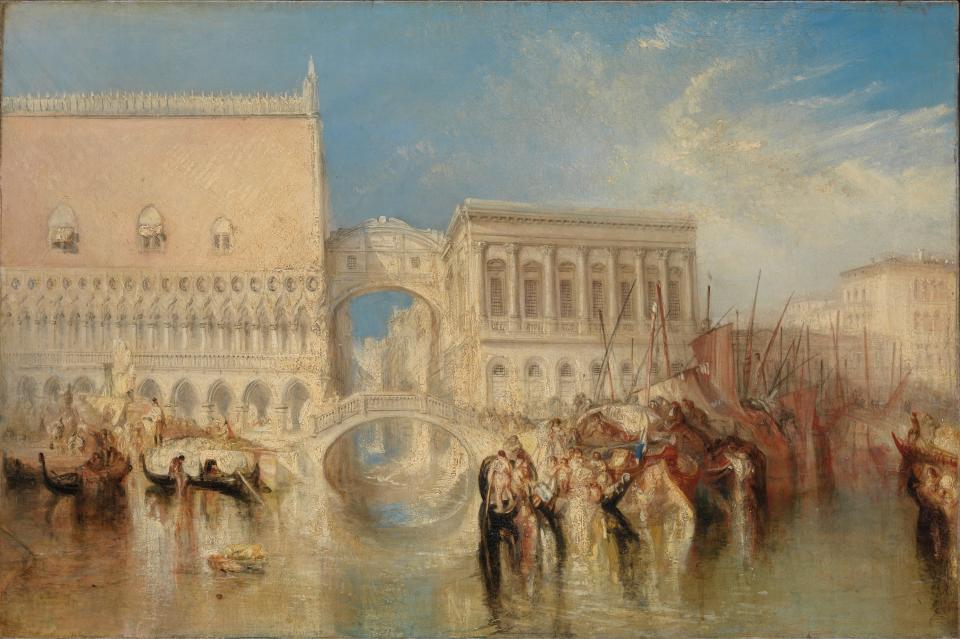Artist J. M. W. Turner Is Having a Moment
It’s not very often that a painting reaches the top echelons of celebrity. There’s Leonardo da Vinci’s Mona Lisa, Vincent van Gogh’s Starry Night, and Johannes Vermeer’s Girl with a Pearl Earring, to name a few, but in the United Kingdom, the A-list painting du jour is J. M. W. Turner’s The Fighting Temeraire Tugged to Her Last Berth to Be Broken Up, better known as simply The Fighting Temeraire. Though the painting—which shows a brutish-looking modern tugboat towing an elegant old warship towards its demolition—was highly praised when it debuted in 1839 at the Royal Academy of Arts in London, it very much continues to delight audiences. In 2005, it was voted Britain’s greatest painting in a BBC Radio 4 poll; in 2012, it made a very metaphorical cameo in the James Bond film Skyfall; and in 2020, it was officially printed on the back of the new £20 note, next to a portrait of its painter. Despite having died in 1851, Turner continues to drive public interest, particularly in the last decade or so, not only in demonstrated by the banknote, but also through exhibitions, films, and even the multimillion-dollar restoration of his home.

National Maritime Museum Brings Together J.M.W.Turner Sea Paintings
Born in London in 1775 to a lower-middle-class family, Joseph Mallord William Turner was a child prodigy. He enrolled in the Royal Academy of Arts at age 14—interestingly, he intended to study architecture, having already worked as a draftsman for several local architects, before an advisor suggested he focus on painting instead—and officially made his debut in an exhibition just a year later. Turner, though an eccentric and oftentimes controversial man, found success rather quickly in the art world, receiving both praise and commissions for his moody paintings of architectural scenes in his earlier years, then dramatic and oftentimes violent ones of landscapes and seascapes later on in his career.

BRITAIN-BANKING-NOTE
Though Turner’s paintings have been the subject of exhibitions around the world throughout his lifetime and, in fact, the 169 years since, the most recent revival of interest in the artist and his works could arguably be attributed to the highly regarded 2014 biopic Mr. Turner, directed by British filmmaker Mike Leigh and starring Timothy Spall as its protagonist. (Per movie review site Rotten Tomatoes, 97% of the film’s reviews by critics were positive.) Then, in 2014, Turner’s modest country house in Twickenham, known as Sandycombe Lodge, began a three-year renovation that would cost more than $3 million. During the renovation, the house, which the artist designed himself, was returned to its original redbrick state—it had formerly been whitewashed—had its interiors painted their original hues as selected by Turner, and the gardens replanted as faithfully to its earliest iteration as possible. The home was particularly meaningful to the artist: according to The Guardian, Turner once stated that “if he could begin life again, he would rather be an architect than a painter.” In January, five rarely seen oil sketches of the Thames by the artist went on display inside Sandycombe Lodge and will be on view through April 30.

If those five paintings aren’t enough to satiate the public’s desire for more Turner work, there are three other major exhibitions opening this year. The first is “J.M.W. Turner: A Quest for the Sublime,” which opened at the Frist Art Museum in Nashville on February 20 and runs through May 31.

Venice, the Bridge of Sighs
Organized in conjunction with Tate Britain, which holds the world’s largest collection of the artist’s works, the show features more than 70 paintings, watercolors, and sketches from throughout Turner’s career. Then, on Friday, the Musée Jacquemart-André in Paris will open “Turner: Paintings and Watercolors from the Tate,” itself featuring 60 watercolors and 10 paintings by the artist. And finally, on October 28, Tate Britain will open its own exhibition titled “Turner’s Modern World,” depicting the Industrial Revolution as interpreted through Turner’s paintbrush. One of its centerpieces? The Fighting Temeraire.
Originally Appeared on Architectural Digest

